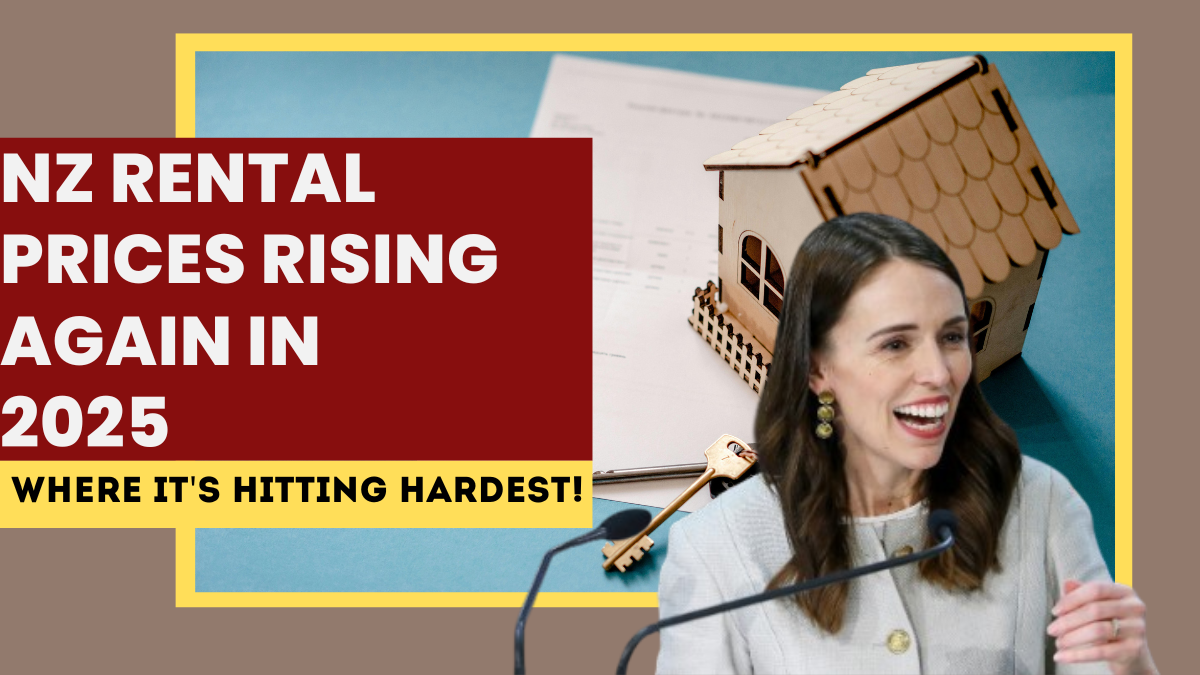New Zealand’s rental market remains under pressure in 2025, with rental prices continuing to climb across major cities and regional areas. For tenants, rising rents are creating significant financial strain, while landlords face growing scrutiny from policymakers aiming to curb housing inequality. Understanding the rental price trends is essential for both renters and property investors navigating today’s market.

Why Are Rent Prices Rising in 2025?
Several factors are contributing to the ongoing increase in New Zealand rental prices:
-
Housing Shortages: Demand continues to outstrip supply, especially in Auckland, Wellington, and Christchurch.
-
Population Growth: Net migration is at one of its highest levels in recent years, adding pressure on housing demand.
-
Construction Costs: Rising material and labor costs are slowing new housing developments, limiting supply growth.
-
Inflation and Interest Rates: Higher mortgage repayments for landlords are often passed on to tenants.
-
Urban Development Pressures: Increased demand for housing near city centers and transport hubs is inflating prices.
The combination of these factors means tenants are paying more, even as wages struggle to keep pace.
Average Rent Prices in 2025
According to the latest data, national rental prices have increased by an average of 6–8% compared to 2024. The median weekly rent across New Zealand now stands at NZD $620, up from $580 the previous year.
City-specific averages include:
-
Auckland: NZD $690 per week, the highest in the country.
-
Wellington: NZD $660 per week, reflecting strong demand in the capital.
-
Christchurch: NZD $550 per week, more affordable but rising rapidly.
-
Regional Areas: Many regions, such as Hawke’s Bay and Bay of Plenty, are seeing double-digit rent growth due to housing shortages.
These increases make renting one of the biggest household expenses, particularly for young professionals and families.
Who Is Most Affected?
The burden of rising rents falls disproportionately on:
-
Low- to middle-income households who spend a higher percentage of their income on rent.
-
Young professionals and students moving into urban centers for education and employment.
-
Migrant families, who often face limited housing choices and higher upfront costs.
-
Single-income households, which struggle to meet rising weekly payments without additional support.
For many, the rising rental costs mean delaying homeownership and facing increased financial stress.
Government Response and Policy Measures
To address the rental affordability crisis, the government has introduced a mix of short-term relief and long-term reforms:
-
Rental Assistance Increases: Expanded accommodation supplements for low-income households.
-
New Build Programs: Accelerated housing construction, especially affordable housing projects.
-
Rental Law Reforms: Stricter rules around rent increases, requiring landlords to justify hikes beyond inflation.
-
Tenant Rights Strengthened: New protections to prevent unfair evictions and improve rental security.
While these measures aim to stabilize the market, experts warn that supply-side solutions such as increasing housing stock remain the most important long-term fix.
Impact on Property Investors
For landlords and property investors, the current climate is mixed. Higher rental yields provide opportunities, but tighter regulations and rising mortgage costs reduce profit margins. Many landlords are also required to meet stricter healthy homes standards, adding to expenses.
Some investors are shifting toward regional markets where demand is growing but entry costs are lower, while others are exploring co-living arrangements and short-term rentals to maximize returns.
Outlook for 2025 and Beyond
Rental prices are expected to remain high throughout 2025, with only modest relief possible if housing supply improves. Strong migration trends suggest that demand will continue to outpace supply in major cities.
The government’s efforts to boost housing construction may begin to ease pressure in the coming years, but for now, tenants should expect ongoing rent hikes and increased competition for available properties.
Key Takeaways
The NZ Rental Price Trends 2025 highlight a market still under strain, with national rents averaging NZD $620 per week. Rising demand, limited supply, and higher landlord costs are driving prices up across the country.
For tenants, the situation means budgeting carefully and considering regional alternatives. For policymakers, the priority remains increasing supply and protecting renters from unsustainable price hikes.
FAQs
What is the average rent in New Zealand in 2025?
The median weekly rent is around NZD $620, with higher averages in Auckland ($690) and Wellington ($660).
Why are rents rising so much in 2025?
Housing shortages, high migration, inflation, and rising construction costs are driving rental increases.
Which regions are seeing the highest rent growth?
Auckland, Wellington, and parts of Bay of Plenty and Hawke’s Bay are recording the steepest rises.
What support is available for struggling renters?
The government has increased rental assistance and strengthened tenant protections against unfair rent hikes.
Are rents expected to fall soon?
No, rents are expected to remain high in 2025, with only long-term housing supply increases likely to ease pressure.
Click here to know more.
